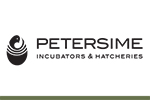How do Fungal Toxins Suppress the Immune System of Poultry Against Infectious Diseases? by: Dr Turki Sarakbi - Yemen
One of the most immunosuppressive elements that can be found in poultry feed is mycotoxins. Mycotoxicosis is the term used to describe various clinical syndromes in birds resulting from the consumption of feed contaminated with fungal toxins. Both cellular and humoral immune responses can be affected by the presence of fungal toxins in animal diets. Specifically in poultry production, mycotoxins interfere with and impair immune organs such as the spleen, thymus, and bursa of Fabricius, reducing the antibody response to vaccines and disrupting fungal-specific immune responses as an inevitable consequence of chicken feed contamination with fungal toxins, even at concentrations lower than those required to induce clinical toxicosis.
Some of the most common mycotoxins causing immunosuppression and inhibition in chickens include aflatoxins, ochratoxins, sterigmatocystin, ochratoxins, fusarium toxins, fumonisins, and trichothecenes (in other words, most fungal toxins). Furthermore, contamination of poultry feed with aflatoxins, ochratoxins, deoxynivalenol, and fumonisins actively interferes and conflicts with immune responses against viral and bacterial vaccines.
Adapting to increasing global temperatures while maintaining production efficiency is an emerging and important challenge for the poultry industry. Under hot temperatures, birds reduce feed intake, leading to a decline in heat increment protein, which is the main factor explaining the deterioration of bird performance. Mitigating these negative effects requires a comprehensive approach, and modifying feeding practices and nutrition programs play a crucial role. Despite the difficulty of implementing certain feeding strategies in the field, especially with intensive production systems, several practices discussed in this review have shown beneficial effects in reducing heat stress on poultry. It is also recommended to increase the concentration of dietary fats and maintain the standard crude protein level to compensate for reduced feed intake and improve the birds' requirements under high temperatures. Additionally, considering increasing the density of certain amino acids, such as methionine and arginine, to meet the growing amino acid requirements for maintenance functions may be beneficial. Therefore, further research is needed to describe nutrient partitioning and bird requirements under coordinated system conditions to ensure cost-effective and efficient solutions for the poultry industry.


















